http://www.codinghorror.com/blog/2007/10/a-visual-explanation-of-sql-joins.html
and
https://web.archive.org/web/20120621231245/http://www.khankennels.com/blog/index.php/archives/2007/04/20/getting-joins/
have been very helpful in learning the basics of joins using Venn diagrams. But I am wondering how you would apply that same thinking to a query that has more than one join.
Let's say I have 3 tables:
Employees
EmployeeID
FullName
EmployeeTypeID
EmployeeTypes (full time, part time, etc.)
EmployeeTypeID
TypeName
InsuranceRecords
InsuranceRecordID
EmployeeID
HealthInsuranceNumber
Now, I want my final result set to include data from all three tables, in this format:
EmployeeID | FullName | TypeName | HealthInsuranceNumber
Using what I learned from those two sites, I can use the following joins to get all employees, regardless of whether or not their insurance information exists or not:
SELECT
Employees.EmployeeID, FullName, TypeName, HealthInsuranceNumber
FROM Employees
INNER JOIN EmployeeTypes ON Employees.EmployeeTypeID = EmployeeTypes.EmployeeTypeID
LEFT OUTER JOIN InsuranceRecords ON Employees.EmployeeID = InsuranceRecords.EmployeeID
My question is, using the same kind of Venn diagram pattern, how would the above query be represented visually? Is this picture accurate?
